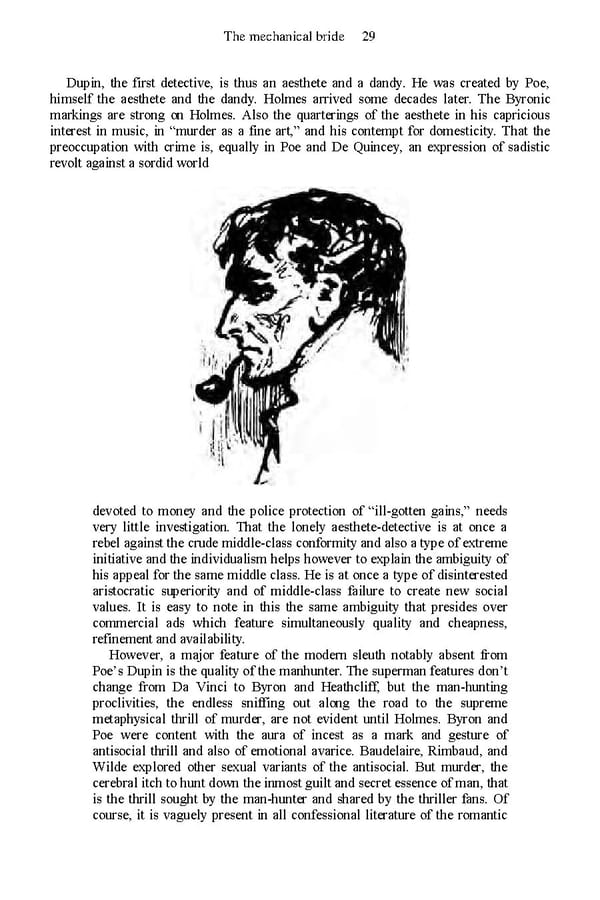The mechanical bride 29 Dupin, the first detective, is thus an aesthete and a dandy. He was created by Poe, himself the aesthete and the dandy. Holmes arrived some decades later. The Byronic markings are strong on Holmes. Also the quarterings of the aesthete in his capricious interest in music, in “murder as a fine art,” and his contempt for domesticity. That the preoccupation with crime is, equally in Poe and De Quincey, an expression of sadistic revolt against a sordid world devoted to money and the police protection of “ill-gotten gains,” needs very little investigation. That the lonely aesthete-detective is at once a rebel against the crude middle-class conformity and also a type of extreme initiative and the individualism helps however to explain the ambiguity of his appeal for the same middle class. He is at once a type of disinterested aristocratic superiority and of middle-class failure to create new social values. It is easy to note in this the same ambiguity that presides over commercial ads which feature simultaneously quality and cheapness, refinement and availability. However, a major feature of the modern sleuth notably absent from Poe’s Dupin is the quality of the manhunter. The superman features don’t change from Da Vinci to Byron and Heathcliff, but the man-hunting proclivities, the endless sniffing out along the road to the supreme metaphysical thrill of murder, are not evident until Holmes. Byron and Poe were content with the aura of incest as a mark and gesture of antisocial thrill and also of emotional avarice. Baudelaire, Rimbaud, and Wilde explored other sexual variants of the antisocial. But murder, the cerebral itch to hunt down the inmost guilt and secret essence of man, that is the thrill sought by the man-hunter and shared by the thriller fans. Of course, it is vaguely present in all confessional literature of the romantic
 Essential McLuhan Page 35 Page 37
Essential McLuhan Page 35 Page 37